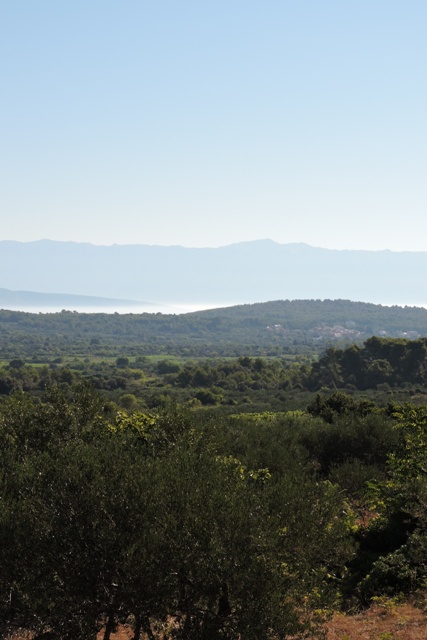The things I get asked
This week: What’s normal anymore?; My old Mandarin; The things I am asked; Looking for a drum of cable; Seedbombing; Flying south for the winter; Looking back;
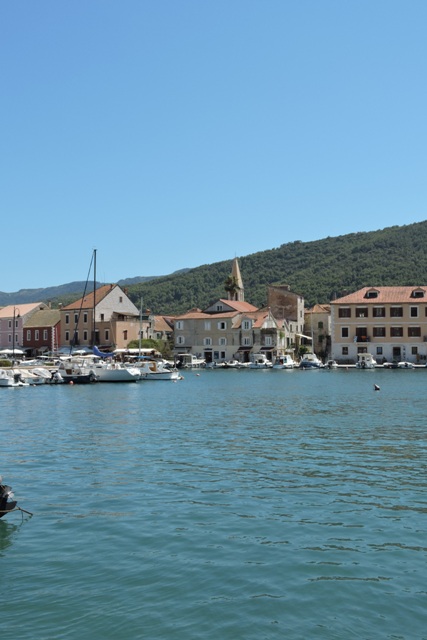
With little rain for the past three months I was watching the weather with more interest than normal this week as the conditions were right for thunderstorms on Thursday.
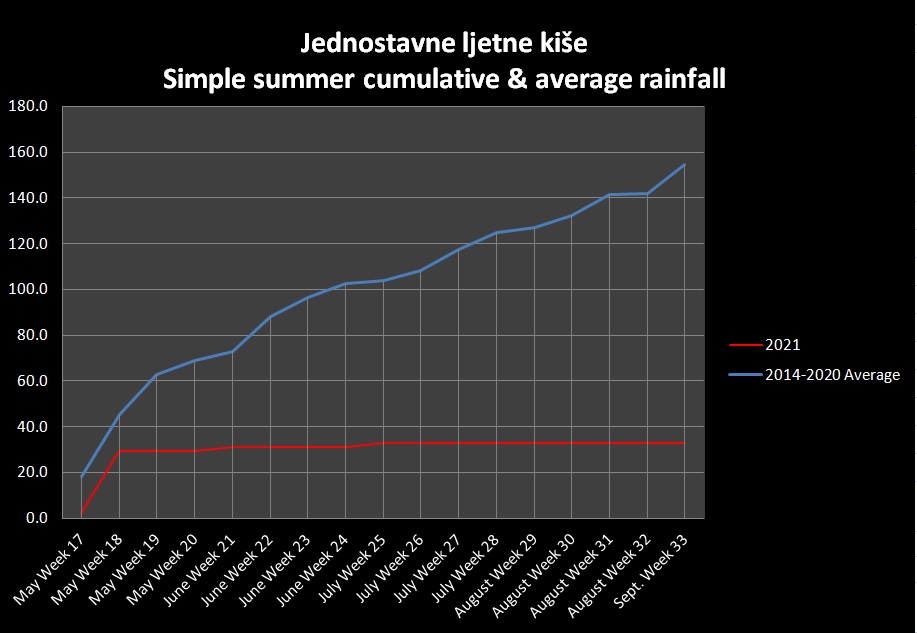
A couple of thunderclaps woke me around 05:00 following by rain beating on the roof for a minute or may be less. Then the rain stopped. By the time it was fully daylight the two dozen drops had evaporated away.
Around 08:30 I could see Cumulonimbus clouds building to the north west so had a look on Blitzortung.

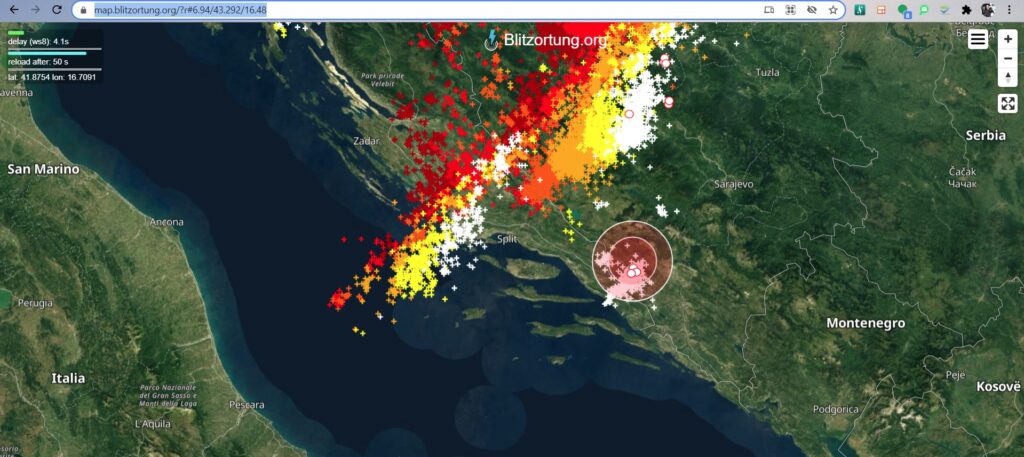
The lightning detectors showed a storm front some 300 kilometres long and moving towards the islands. The main and most active part of the storm was over the mainland, well to the north.
In the end the storm over the ocean dissipated and we didn’t have a single drop of rain. Such is the nature of summer storms.

What’s normal anymore?
I wrote a couple of weeks ago about my concerns for one of my sweet cherry trees in the top orchard, whose leaves were changing colour and falling early.
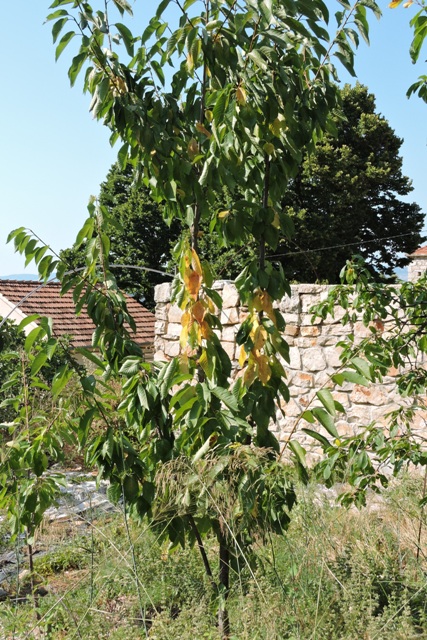
It has had a lot of TLC and some deep watering since then, but its leaves have continued to turn yellow and a few more have fallen.
Then during this recent very hot spell, the other two varieties of cherry nearby have also started to exhibit the same yellowing leaves.
I had a morning perambulation through the olive groves following Pongo and Tigger as they played “chase”. I followed as they went a different route and passed a couple of very well established cherry trees.
They were once part of another drupe orchard I think.
The largest tree, with a girth of 90 cm and a height of eight or more metres has lost three quarters of all its leaves, from top to bottom.
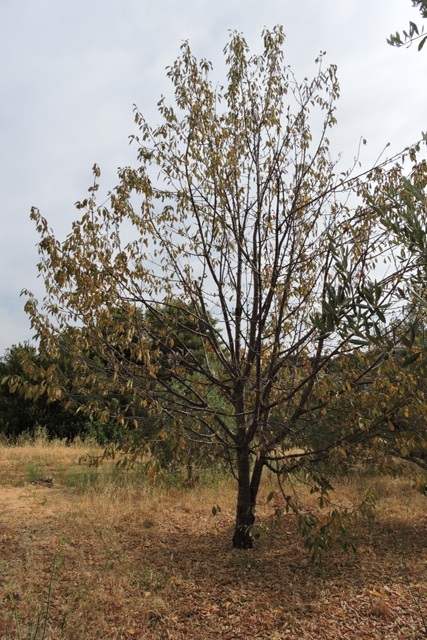
They have turned a pale, almost translucent yellow and fallen making the ground look like autumn.
The loss of green suggests and absence of chlorophyll rather than the usual mechanism of leaves changing colour in the autumn.
I usually come at this tree from the other direction where it is mostly hidden by olive trees, so I’ve not noticed the leaf loss before.
I can’t think that this old tree is suffering water stress.
Being well established, it’s roots will be very deep and it is at the bottom of a couple of terraces, so the soils are deep and moisture should have pooled there as well.
This makes me think that it is perhaps this variety of cherry tree’s response to the the heat of the summer.
The second tree seems to by dying from the top down, but it was dying in the spring, so it is the big tree which interests me.
I no longer know what is “normal” any more, in a year of completely abnormal weather.
My old Mandarin
All of the trees I have planted are named varieties, but of course they are on new rootstock too.
The established trees around here were planted in the days of the Yugoslavian Republic, when you planted what ever you could get your hands on. The varieties are unknown.
I’m also worried about on old Mandarin tree in the corner of the Citrus orchard.
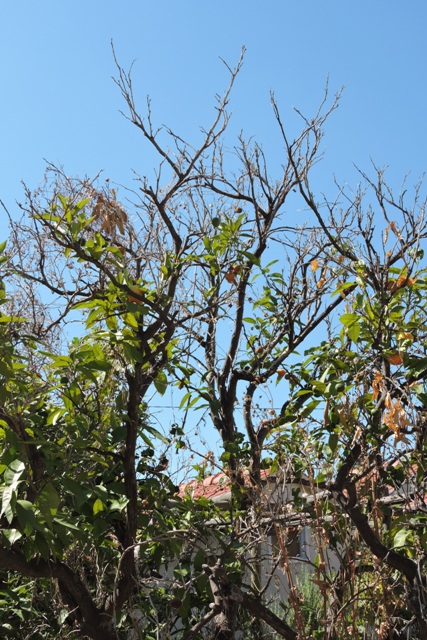
This tree was hit badly losing every leaf, when we had the abnormal freeze in January 2017. During this unusual freezing event the air temperature with the wind chill dropped to -15ºC.
Citrus are evergreen, so a total leaf loss is a highly unusual event. I lost ten new citrus saplings along with a mature orange tree, as did everyone else with citrus trees nearby.
The Mandarin recovered, grew new leaves but started to die back from the ends of the uppermost branches. This has become worse this year, with a lot more dieback happening.
I’m tempted to try a Side Veneer Graft into the bark this winter, which if it took, I would then really cut the tree back.
The alternative is to remove the tree and plant a new sapling. It is a shame because this Mandarin has always been laden with fruit.
This year though, while there are young fruit on the tree, there is only about a quarter of what I’ve had in previous years.
I really don’t know what to do, apart from cutting the dead branches out.
The things I am asked
I’ve no really big mechanical projects on the go at the moment, although I have a “kit build” 1949 vintage motorcycle awaiting collecting in the UK.
However this week I’ve been asked about how to recommission a Norton Commander.
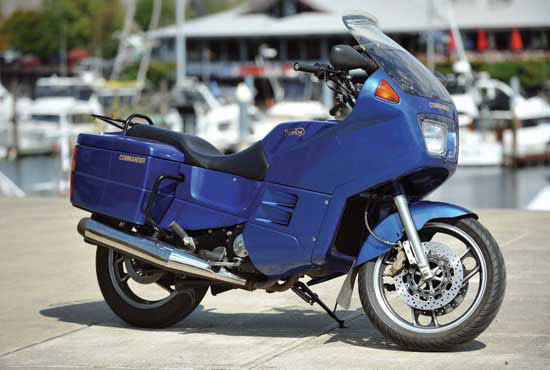
These were the very last machines built when it was still the Norton motorcycle company that everyone remembers.
The Norton name still lives on, but it has been through several hands who just purchased the rights to use the name.
The Commander was pretty unique because it was a twin rotor machine, 590cc, with two cylinders and running on a two-stroke petrol/oil mixture.
Being a rotary Wankel engine it had an immense power to weight ratio. It was also water cooled, just to add another element into the mix.
The motorcycle in question was exported from the UK to the EU but has not been run for somewhere between ten and twenty years. The owner isn’t sure exactly how long it has been standing.
During the heat of the day, I have been researching these 30+ year old machines and eventually unearthed a Norton factory re-start procedure.
The procedure takes a week or more to make sure that all the moving parts of the rotors are lubricated before you ever get to the point of turning the fuel taps on and pressing the start button.
You start by removing the spark plugs and coating the inside of the rotor housing with oil, then leave and repeat the process for several days.
What it did remind me of was a tip I learnt a long time ago.
Using an old pan, slowly heat new, low ash oil and then using a squirty oil can, spray the inside of something which should move, that doesn’t with the hot oil.
Hot oil is more viscus than cold oil and seeps into parts that cold oil won’t reach.
Contrary to the adverts, never use WD40 inside an engine!
I passed all the information and an I’m waiting to hear what happened next…
Looking for a drum of cable
Continuing to think about passive cooling, especially as the outside air temperature on two consecutive nights this week has been over 28ºC again, and over 30ºC inside the house, I realised I need accurate wind data.

The wind speed and direction is continuously monitored on my weather station and the data uploaded every five minutes to the weather cloud.
However I have known ever since I set my station up here in Dol, that the anemometer did not meet international measuring standards for surface wind, by a long way.
The World Meteorological Organisation has set the international standard height for wind measurement devices at 10 meters (33 feet) above ground, with no obstructions at or above this level.
Fixing your anemometer at this height can not only be difficult but expensive as well.
This is the height of two shipping containers, one on top of the other.
We get a lot of electrical storms all year round in Dol (although not so many this year though) and several houses nearby have roof top lightning conductors.
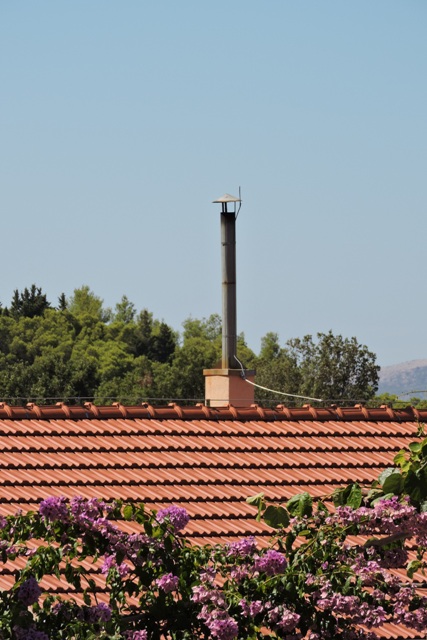
The electrical supply company mast at the end of my building has a lightning conductor attached, and it is only just above the roof ridge top height.
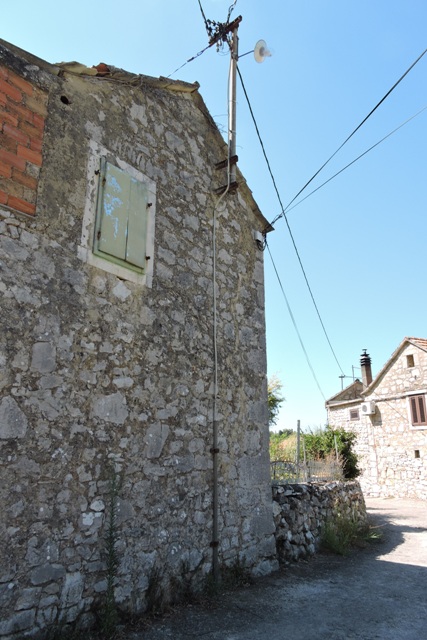
When I set my system up, I made sure that the metal pole it was attached to was lower than the electric pole, which means it is barely a meter above the height of the ridge tiles.
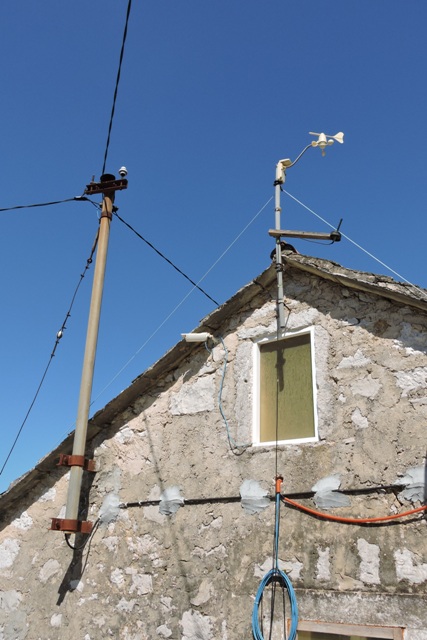
This means that it is affected by all the vortices that the roof creates.
This shows in the recording because even when the wind is consistently from one compass point, its recorded direction is constantly shifting.
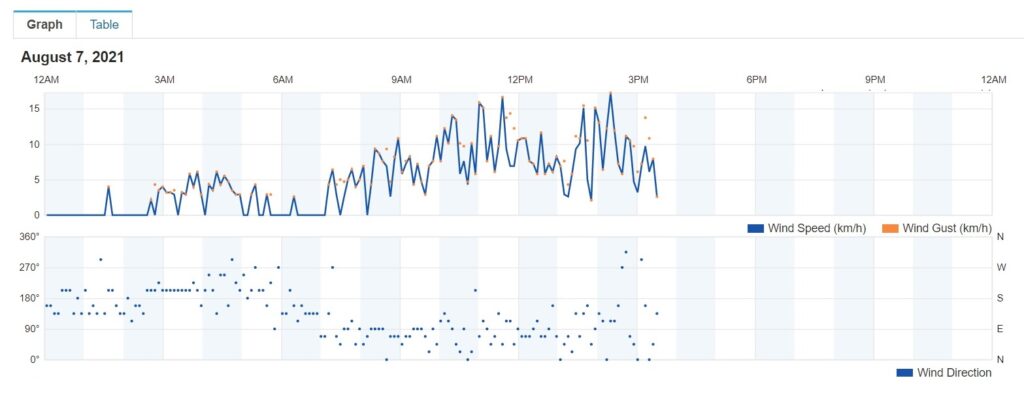
I have planned to relocate the device to a wooden pole, attached to the Stevenson Screen in the garden. But like so many things, this has been delayed by Covid.
Even then, if it is 6 meters agl, it will still be only just over half of the international standard height. However it will be away from most obstructions, although it will still be marginally affected by nearby tall trees.
But I need my drum of outdoor communications cabling and I can’t find it.
I know where it was, but that room has been cleared and the drum is not where other things went to. I don’t actually remember when I last saw it even.
So I’ve been going through the garden sheds and small storage spaces trying to find the drum. So far I have not been able to.
I’m going to have to just keep looking…
Seedbombing
I’ve been seed bombed this week.
My German friends from Cologne have arrived for their summer holidays and gave me a surprise present of some Schmetterlingswiese produced by diestadtgartner.de.
I was aware of the concept of mixing seeds with soil and clay to form a ball which is then planted, however this is the first time that I have actually seen them.
Seed bombing can be carried out from the air, with large areas quickly sown by aircraft. However these are to be hand sown in the garden.
The company produces a whole range of different products, including several varieties of seed bombs and the Schmetterlingswiese are seeds for flowers to attract butterflies and other pollinating insects.
The range of seeds in the butterfly bombs is huge from the well known poppy and marigolds to Cynoglossum amabile (Hound’s tongue) which I’m not familiar with and had to look up.
Because spring starts so early here in Dol, I will have to experiment a little to see when to plant these little clay balls.
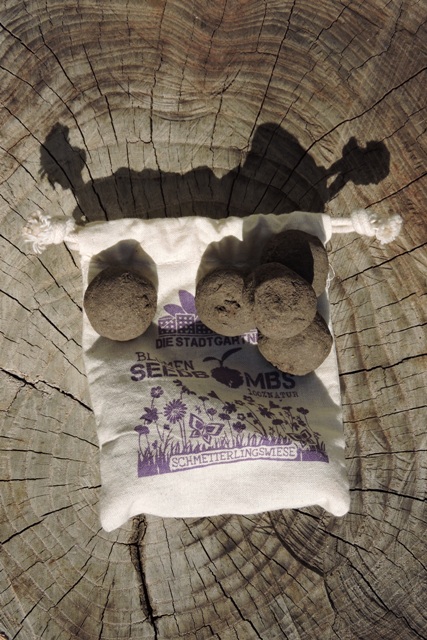
I’m thinking probably mid February, as soon as the sun is starting to warm the soils. The next question then is where to plant them?!
Flying south for the winter
Our resident Swallows have headed south for the winter over the last week.
There are still both Swifts and Swallows wheeling and calling between the buildings down in Stari Grad and along the Plain but ours from the village have left.
I’ve noticed before that the Swallows which nest and raise a brood of young in and around the buildings close to home always seem to be some of the first to leave. This happens long before others just a few kilometres away depart on their biannual migration.
In the UK the Swallows congregate in large numbers on wires just before they depart, so it is obvious to an observer that they are making ready for their long flight to southern Africa. However this is not a trait that the birds in Dol exhibit.
One day they are overhead, darting and diving after their insect food, then suddenly they are gone.
From spring into summer the Scops Owl is a perpetual night time companion.
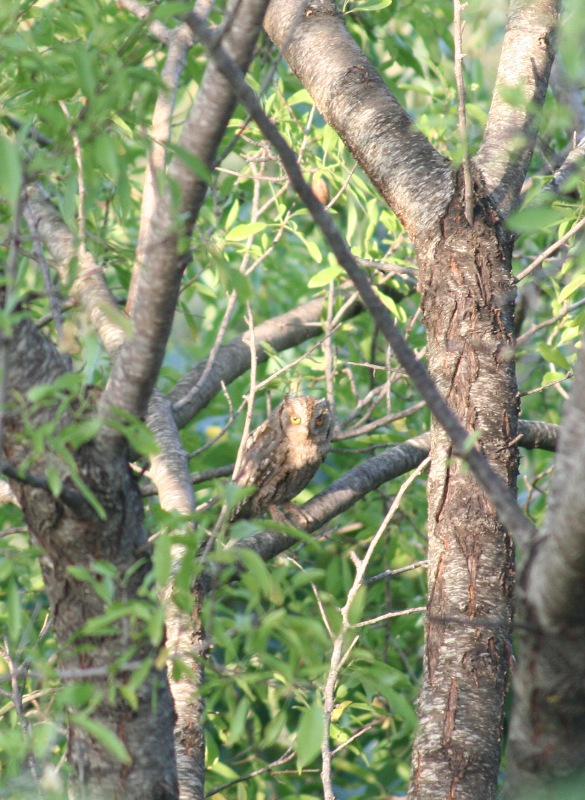
With a call which sounds like an electronic tone, repeated every second continuously from before sunset to dawn, they are a welcome and noticeable migrant.
On Tuesday evening one began calling from very close to my home, although I didn’t try and see where the owl was. There were none of the usual answering calls, just the solitary “pinging” growing louder and then quieter as the bird was on the wing.
On Wednesday night, another extremely warm night with an OAT of more than 28ºC, I kept waking because of the heat and humidity.
There were few sounds from outside, just some Crickets and one of my felines.
I realised that the Scops has left on its migration as well. NCG
Looking back – Week 31
This is the start of a new weekly section, with links to past issues of the blog.
2014/31 Sometimes you make a complete fool of yourself
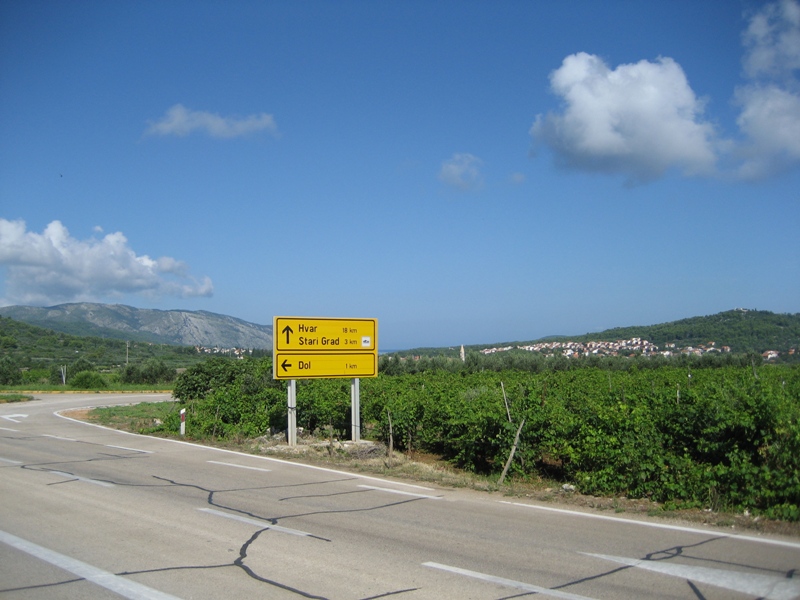
2015/31 A visit to the Vets and watching paint dry

2016/31 Visit to the Moulin Rouge

2017/31 Feel the heat!
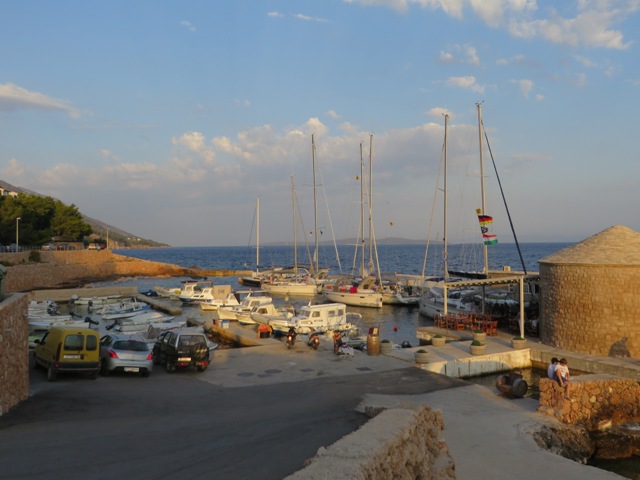
2018/31 Super Puh!!

2019/31 Under the weather

2020/31 The common Cormorant
